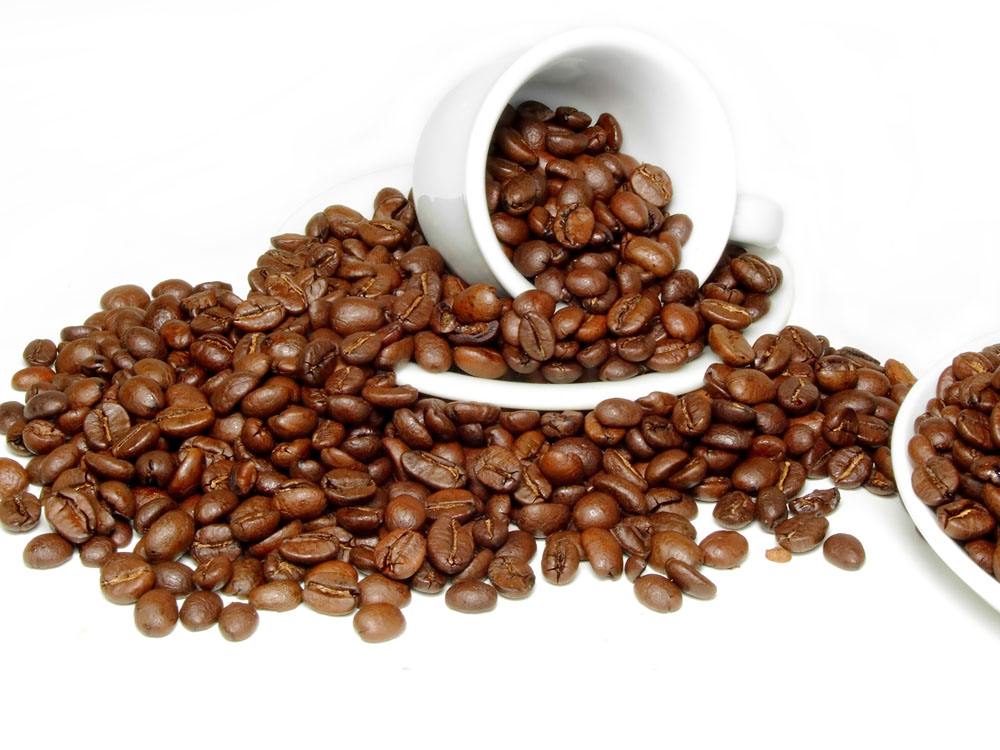Vietnam Coffee Bean planting Climate altitude, Vietnam Coffee Industry Development Plan
Vietnam's geographical location is very favorable for coffee cultivation. Southern Vietnam has a hot and humid tropical climate, which is suitable for growing ROBUSTA coffee, while the north is suitable for growing ARABICA coffee. Coffee production in Vietnam has the following characteristics:
The main results are as follows: (1) because there is no effective way to deal with fallen leaves, medium-grain coffee was selected as the main variety in the early 1980s.
(2) based on the planting technology, the coffee planting method was determined, that is, under the hot and humid climate in southern Vietnam, high density planting, large amount of irrigation, excessive fertilization and no shading trees were used to obtain the maximum yield and give full play to the production capacity of medium-grain coffee. The per unit yield of many coffee plantations in Daklak, Gia Lai, Kontum and Dong Nai areas of Vietnam reached 340t / ha. The yield of some plantations is even as high as 89.9 tons per hectare.
(3) processing technology: mainly making full use of the solar energy drying method in the dry season in the plateau of central Vietnam to process coffee.
Coffee cultivation in Vietnam covers an area of about 500000 hectares, of which 10% are owned by state-owned enterprises and farms, and 85% by farmers and landowners. The scale of the manor is small, usually 2-5 hectares, and the large manor is about 30-50 hectares, but the number is small. Vietnamese coffee ranks second in all agricultural products exported from Vietnam, second only to rice. Every year, about 300000 farmers are engaged in coffee cultivation, with a labor force of 600000, and the labor force can reach 700000 to 800000 in the three-month harvest period. as a result, the coffee industry has absorbed 1.83% of the country's total labor force and 2.93% of the total agricultural labor force.
Follow the caf é (Wechat official account vdailycom) and found that Beautiful Cafe opened a small shop of its own.
Vietnam Coffee Corporation (VINACAFE) is a 100% state-owned enterprise with 70 companies and farms under its jurisdiction. VINACAFE exports 20-25% of Vietnam's coffee production each year.
Development Plan of Coffee Industry in Vietnam
At present, Vietnam is making strategic adjustments according to the following main contents:

1. Change the planting structure and determine the strategic goal of the development of the industry. Reduce the planting area of ROBUSTA coffee and turn the land with low efficiency in coffee cultivation into other perennial cash crops such as rubber, pepper, fruit trees and annual crops such as cotton and hybrid corn.
Expand the planting area of ARABICA coffee in areas where conditions permit. The ultimate goal of the strategy is to maintain or slightly reduce the current perennial area of coffee to about 450000 to 500000 hectares, including 350000 to 400000 hectares for ROBUSTA coffee (a decrease of 100000 to 150000 hectares) and 100000 hectares for ARABICA coffee (an increase of 60, 000 hectares over the 40, 000 hectares previously grown with French aid loans). The total output is guaranteed to be about 600000 tons, equivalent to 10 million packets, 5 million packets less than the current ROBUSTA coffee.
2. Reduce the production cost and improve the operation efficiency. Although the labor cost of Vietnamese coffee industry is relatively low and the output of coffee is high, the cost of Vietnamese coffee is still high and it is difficult to be competitive. The main reason is that Vietnamese farmers purchase a large number of chemical fertilizers and irrigation in order to increase their output as much as possible, which reduces the efficiency of investment and increases the cost of production. Therefore, it is necessary to adjust the investment structure and reduce the investment in chemical fertilizers, pesticides and irrigation. It is not necessary to pursue the highest output but can achieve the most considerable profit level. In addition, at present, Yue farmers use a large number of chemical fertilizers, which should be replaced by organic fertilizers to improve the scientific and technological content.
3. Improve the processing technology and equipment, adopt the Vietnamese national product quality standard in line with the international standards, and improve the product quality according to the market requirements. Now, the ability to process ARABICA coffee is poor, especially in the first process of peeling. Due to the lack of a large amount of clean water and sewage treatment facilities in many areas, it is inevitable to pollute the environment.
4. Produce and provide a variety of goods except raw coffee kernels to the market to meet the needs of consumers. At present, there are two instant coffee manufacturers, one is the Bianhe coffee factory under VINACAFE, and the other is the Vietnam factory of Nestl é (Thailand). The current problem is to expand the market scope. In addition, the development of boxed liquid coffee is also being considered.
5. Produce high quality products, such as organic coffee, special coffee and so on. The climatic conditions in the mountains of northern Vietnam are suitable, which is conducive to the growth of ARABICA. Local minorities seldom use chemical fertilizers and pesticides, and have the conditions to develop organic coffee, but the problem is that organic coffee requires authoritative certificates and market recognition, and the more areas do not reach this level.
6. reform the business relationship, strengthen the development of the international market of Vietnamese coffee, and pay more attention to the development of the domestic market. At present, Vietnamese coffee has been exported to 50 countries and regions in the world, but it lacks traditional and stable trading partners. Yue Coffee has not yet participated in futures market trading. At the same time, the domestic coffee market in Vietnam has not been fully developed, and although Vietnamese have been drinking tea for a long time, the potential for young people to drink coffee is considerable.
7. The last thing is to maintain the stable development of the coffee industry in Vietnam. The coffee industry in Vietnam supports 600000 farmers, and the number of people related to the industry reaches 1 million. The coffee industry in Vietnam is still weak, and it is still very weak compared with the world's traditional coffee powers. Therefore, it is necessary to take advanced measures in coffee cultivation, production, processing and trade to improve efficiency and develop Vietnam's coffee industry into a stable and sustainable industry.
Important Notice :
前街咖啡 FrontStreet Coffee has moved to new addredd:
FrontStreet Coffee Address: 315,Donghua East Road,GuangZhou
Tel:020 38364473
- Prev

What is the best coffee in Vietnam?
Pay close attention to coffee reviews (Weixin Official Accounts vdailycom ) and find that there is one thing I love best in Vietnam when I open my own shop. If I love it, I can't give up. That is Vietnamese coffee. Really, I have drunk coffee from many countries, but no coffee is as fragrant and attractive as Vietnamese coffee. Vietnam is the second largest coffee producer in the world after Brazil.
- Next

Vietnamese coffee producing area, introduction of Vietnamese coffee taste
Following Cafe Review (Wechat official account vdailycom) found that Beautiful Cafe opened a small shop of its own well-known representative coffee: Vietnam Coffee Vietnam is also one of the top several coffee producers in the world. At present, the vast majority of coffee trees in Vietnam are Robusta because the Arabica coffee tree in Vietnam was destroyed by leaf rust in the mid-19th century.
Related
- Detailed explanation of Jadeite planting Land in Panamanian Jadeite Manor introduction to the grading system of Jadeite competitive bidding, Red bid, Green bid and Rose Summer
- Story of Coffee planting in Brenka region of Costa Rica Stonehenge Manor anaerobic heavy honey treatment of flavor mouth
- What's on the barrel of Blue Mountain Coffee beans?
- Can American coffee also pull flowers? How to use hot American style to pull out a good-looking pattern?
- Can you make a cold extract with coffee beans? What is the right proportion for cold-extracted coffee formula?
- Indonesian PWN Gold Mandrine Coffee Origin Features Flavor How to Chong? Mandolin coffee is American.
- A brief introduction to the flavor characteristics of Brazilian yellow bourbon coffee beans
- What is the effect of different water quality on the flavor of cold-extracted coffee? What kind of water is best for brewing coffee?
- Why do you think of Rose Summer whenever you mention Panamanian coffee?
- Introduction to the characteristics of authentic blue mountain coffee bean producing areas? What is the CIB Coffee Authority in Jamaica?

